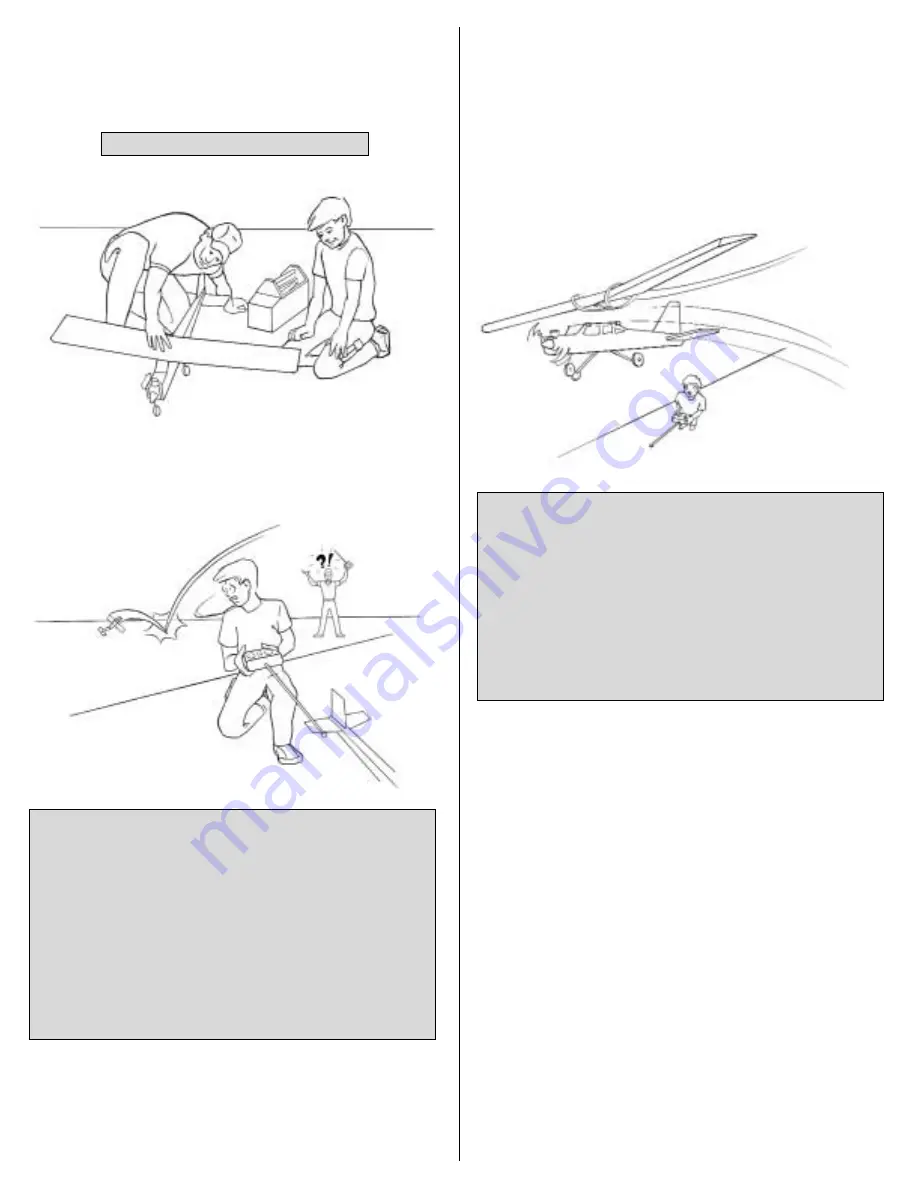
Spare Parts:
❏
10 x 6 Propellers
❏
Glow plug
❏
#64 Rubber bands (stored in container with talcum powder
or kitty litter)
Preflight checks are to be done at the flying field. Your
flight instructor should perform the checks with you.
Mount the Wing
Mount the wing to the fuselage with 12 #64 Hobbico or similar
rubber bands. Install them from front to back, crisscrossing
the last two. Never use torn, cracked or oily rubber bands.
After removing the rubber bands from your model, store them
in a container with talcum powder or clay-type kitty litter to
absorb oil and keep them fresh for the next flying session.
If the rubber bands you will be using are different from those
recommended, consult an experienced modeler to make
certain they are strong enough, and that you have used enough
of them. If uncertain, force the front of the wing off of the wing
saddle. There should be considerable resistance! If the wing
can be forced from the fuselage without having to strain your
hands, then there are probably not enough rubber bands.
Check the Controls
1. Get the frequency clip from the frequency control board at
your flying site.
2. Turn on the transmitter and receiver. One at a time, operate
each control on the airplane using the sticks on the transmitter.
Make certain each control is responding correctly. This must be
done before every flight. There are several types of
malfunctions that can be discovered by performing this
elementary task, thus saving your model!
Range Check the Radio
A range check must be performed before the first flight of a
new model. It is not necessary to do a range check before every
flight (but is not a bad idea to perform a range check before the
first flight of each day). A range check is the final opportunity to
reveal any radio malfunctions, and to be certain the system has
adequate operational range.
1. Turn on the transmitter and receiver. Leave the transmitter
antenna all the way down. Walk away from the model while
simultaneously operating the controls. Have an assistant stand
IMPORTANT!!! Flying a model with too few rubber bands
can be dangerous. If the wing momentarily lifts from the
fuselage and acts as though a large amount of “up” elevator
has suddenly been applied because there are not enough
rubber bands or they are too weak, internal structural
damage may result. Even worse, the wing could actually
detach from the fuselage resulting in a crash. If the model
exhibits any tendencies that indicate there are not enough
rubber bands, immediately reduce power, land and closely
inspect the model for damage. If no damage is found, add
more rubber bands.
IMPORTANT: Your radio control system transmits a signal
on a certain frequency. Be certain you know what that
frequency is. This is expressed as a two-digit number (42,
56, etc.), and can be found on the transmitter, on the
receiver and on the box the transmitter came in. There are
many different frequencies, but there is a chance that
someone else at the flying field may be on the same
frequency as you. If you turn on your transmitter while that
person is flying, a crash will result. NEVER turn on your
transmitter until you have permission from your instructor,
and until you have possession of the frequency clip used for
frequency control at the flying site.
Preflight Checks
21




































